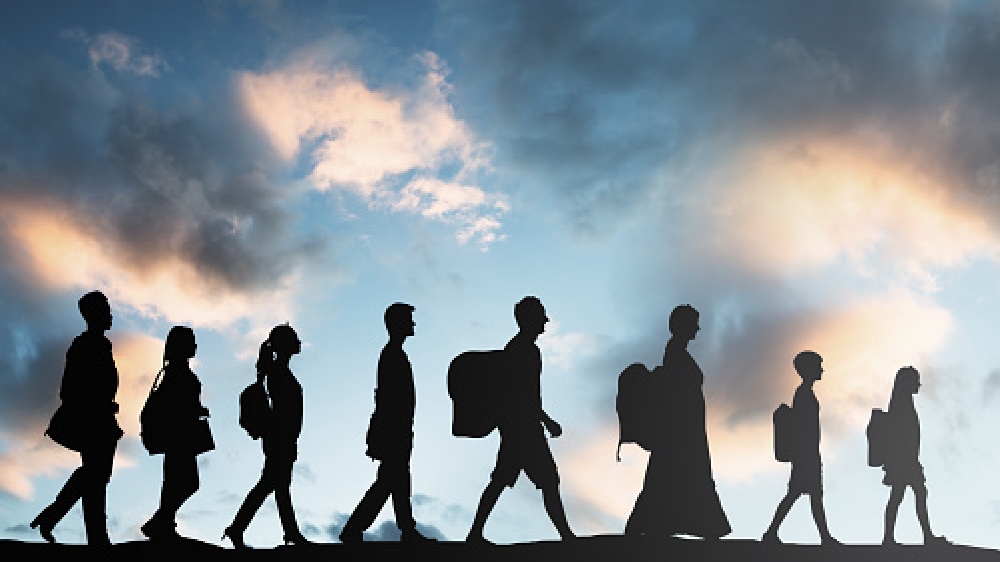The mechanics of displacement
The UN says the world is now witnessing the highest levels of human displacement ever recorded in history. By the end of 2018, 70.8 million people had been driven out of their homelands, due to political developments that have led to military conflict and persecution.

NEW YORK: This week, it was reported that the bodies of as many as 46 immigrants were found in an abandoned tractor-trailer in San Antonio, Texas. The victims were being smuggled into the US from the bordering Mexico, a tale that has played out time and again in first world economies. In the aftermath of this incident, it becomes pertinent to face up to the challenges thrown up by the displacement of citizens from the regions that they call home, owing to the threat of sectarian violence, economic hardships or political persecution.
The UN says the world is now witnessing the highest levels of human displacement ever recorded in history. By the end of 2018, 70.8 million people had been driven out of their homelands, due to political developments that have led to military conflict and persecution. Among those displaced, there are about 30 million refugees, with over 50% of them being under 18. Millions of stateless people are among the casualties, and they are denied a nationality, and access to basic human rights such as education, healthcare, employment and freedom of movement.
Following the Russian invasion of Ukraine, another wave of human displacement has taken place – this time in Europe. Over 13 million have fled their homes since February. While five million individuals have crossed over into neighbouring nations, eight million are said to be displaced inside Ukraine itself. This wave of refugees has exposed some fault lines in terms of how refugees are treated as per ethnicities.
While European nations such as the UK, Hungary and Germany had opened their arms to refugees from other strife-torn European nations, there were double standards in the reception offered to refugees from Arab and African nations. UK Prime Minister Boris Johnson recently came under fire for his policy of deporting illegal immigrants who entered Britain via the English Channel, and relocating them to Rwanda until their claims were processed. The UK also seems to have overlooked the UN’s 1951 Refugee Convention and its 1967 Protocol when drafting its refugee policies. The cornerstone of this Convention is the principle of non-refoulement, which says that a refugee should not be returned to a country where he or she faces serious threats to his or her life or freedom.
Here in India, we are also dealing with a refugee crisis. Back in March 2020, a Delhi-based rights group had said that the Citizenship (Amendment) Act, 2019 has made about 6,00,000 refugees in India forever stateless. The CAA prescribes citizenship for six non-Muslim communities that took refuge in the country from Afghanistan, Bangladesh and Pakistan till the year 2014. The six lakh refugees who stand excluded from the Act include over 3 lakh Sri Lankan Tamils, over 1 lakh Tibetans, 1,00,000 Chins and 40,000 Rohingya from Myanmar and 39,000 others.
Currently, there are 94,069 Sri Lankan Tamil refugees in India, with 58,822 individuals, including about 10,000 children under the age of 8 living in 108 camps spread across Tamil Nadu. Around 34,087 people with refugee certificates live outside the camps. More recently, two batches of Lankan Tamils landed up on the Rameswaram coast this March, in an attempt to escape the severe economic shortfalls in the neighbouring nation.
The refugee crisis is not a problem that might subside anytime soon. And, at a time when nations have been stretched to a breaking point, it gets harder to take on the burden of an additional mouth to feed and protect. That’s why we need a nuanced approach to dealing with this problem – an approach that takes into account both the practicality of dealing with refugee populations, while not overlooking the humane aspects of the crisis.
Visit news.dtnext.in to explore our interactive epaper!
Download the DT Next app for more exciting features!
Click here for iOS
Click here for Android



